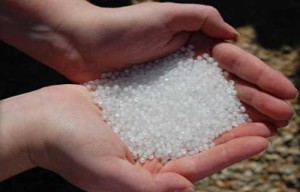With the world currently producing more than 380 million tons of plastics every year, and the future of automotive production quite secure, will the introduction of plastic compounding concept support the overall market trends?
Plastic compounding is a process of combining plastics with additives in their molten state. This mechanism generally augments the strength, durability, and the sustainability of plastic compounds and finished products, to be further used in abundance across automotive and infrastructure applications. In one way, it could be rightfully stated that replacement of plastic materials with advanced materials posing similar characteristics would add to the mounting need for plastic compounding.
Globally, the overall plastic compounding industry is set to record a valuation of USD 169.7 billion by 2026. This can be backed by some of the latest developments in the field, including the intrinsic efforts being undertaken by industry behemoths in expanding their product portfolio and geographic reach.
On June 2020, Houston-based Ascend Performance Materials had declared an acquisition pact with Tehe Engineering Plastic and NCM Co. Ltd. The agreement was aimed at offering Ascend a flexible footprint for expansion and development in China. Moreover, the accomplishment also comes on the heels of the company’s plans of expansion of compounding assets at the site along with a global R&D center with immense focus being laid on existing applications in the consumer and industrial areas, automotive, and electrical and electronics.
Meanwhile, one of Budapest’s leading petrochemicals firm- MOL Group, had earlier acquired 100% stake in Aurora, a Germany-based plastics compounder. Apparently, the deal was made to reinforce the former company’s position in sustainable compounding and as a material supplier to the automotive sector.
These instances evidently link the connection between the thriving automotive sector and plastic compounding.
Metal components? No. Plastic compounding is a key trend in automotive industry
Today, the craze of lightweight vehicles is at a peak amongst the gen-Z population, given their umpteen benefits including reduced fuel consumption. It would be essential to note that 36% of the toxic emissions are due to weight, which means, more the weight, higher the emission levels.
Although the sales of light weight vehicles had plummeted in the light of the coronavirus pandemic, with total new vehicle sales falling 14.6% in 2020 across the U.S., the demand is expected to soar to all new levels in the coming years. A robust demand for lightweight components, including plastics, has now fostered the need for plastic compounding.
But, how is the inclusion of plastic combating the risks of carbon emissions from an automobile? The answer is through reduced vehicle weight. 100 kgs of plastics reduce the overall automobile weight by almost 200 to 300 kg. Modern cars today are being built in such a manner to save huge amounts on fuel being used. Every light car saves nearly 750 liters of fuel in its lifetime.
In the United States, the Corporate Average Fuel Efficiency (CAFÉ) standard directs that passenger vehicle fleets must average 54.5 miles by gallon by 2025 end, while also ensuring that the fuel economy is improved by about 50% across the PV fleet.
Fact is that using polypropylene materials in the automobile can generate huge return on fuel savings and prove out be highly economic in the time of sustainability. PPs are generally being used in bumpers, display console, door panels, trunk liners, seatbacks and much more. In fact, PP along with polyurethane have now taken over about 50% of the total plastic consumption in vehicles.
Polypropylene is accounted under thermosetting polymers. Global Market Insights, Inc. has projected that plastic compounding market share from thermosetting polymer products could expand at a robust 6.4% CAGR up to 2026. Auto parts will be a key element of this growth.
Speaking of the demand for PP in automobiles, researchers of University of Glasgow had put forth a novel development of new plate-lattice cellular metamaterial for automotive spare parts. It is deemed capable of providing impressive impact resistance to the vehicle. The material, which is made of a blend of PP and PE, can add to the production of lighter, more durable, and safer structures for use in the automotive sector.
On June 2020, Mitsui Chemicals and its subsidiary- Prime Polymer, had commenced operations at its Mitsui Prime Advanced Composites Europe site to ace the development of lightweight compounds and materials for automobile companies. The recently launched unit marks the company’s first PP compounding site in the region.
Moving further with polyurethane, it is vital to understand that this polymer material stands to be a staple for seating foam. Additionally, its burgeoning demand is adding to the strict standards put forth by CAFÉ for increasing the fuel efficiency of vehicles.
Last year, Covestro was chosen as a standard partner by Toyota Boshoku Corp., for the development of a new PU composite material for production of parts of a new electric concept vehicle ‘LQ’, which is being developed by Toyota Motor Corporation. This move touted to add to the mounting demand for light weight vehicles.
Plastic alone, in any form, is considered to be both, the boon and bane for the global society. While it can be used in automotive or construction industries as a lightweight component, it adds huge volumes to the landfill pollution. According to EPA reports, global landfills received over 27 million tons of plastic in 2018. In fact, a study recently revealed that if the present trends continue to dominate, there are high chances that the world would record about 12 billion metric tons of plastic in landfills by 2050.
These daunting numbers have raised alarming concerns amongst various central and state governments as well as the plastic industry conglomerates; which has indeed propelled them to take a step ahead in bringing up a novel concept in the field. One of these initiatives can be plastic recycling, or re-compounding, which is stated to generate huge returns for the overall industry in the years to come.
Author: Vinisha Joshi








